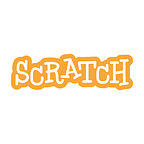Scratch in Practice: How Do You Scaffold Peer Learning?
By Natalie Rusk
When we ask young people what motivates their participation on Scratch, they often emphasize the importance of their friends and other peers. Whether in person or online, peers motivate creative learning by sharing ideas, collaborating on projects, offering help, providing encouragement, and creating a sense of connection and community.
While there are numerous benefits to peer learning, I know from experience how challenging it can be to organize and facilitate a class or workshop so that all students have positive peer interactions and constructive collaborations. I have become fascinated to learn about the different ways that educators are supporting peer learning with Scratch.
Scaffolding Collaboration by Providing Roles
On the CSTeachingTips site, Colleen Lewis offers Tips for Pair Programming, describing strategies for managing peer collaboration in classrooms, based on her own research and teaching experience. She suggests ways to structure pair programming so that students learn how to work together and switch roles at specific time intervals. She also suggests the option of “buddy programming”, where students start in pairs but then branch out to work side-by-side on individual projects, exchanging ideas and helping each other as they create.
Scaffolding Collaborative Activities
In a recent research study, Meg Ray, Maya Israel, and two of their colleagues observed how teachers facilitated collaboration in 10 public classrooms, ranging from grades K to 8, all of which included or focused on students with special needs. I found it helpful to see how these researchers categorized the collaboration strategies, describing a continuum from teacher-driven collaboration to student-driven collaboration. I have included a simplified version of their diagram below.
In the classrooms they studied, 9 of the 10 teachers incorporated some form of support for peer collaboration, such as organizing a peer mentoring program or providing sentence starters to help students communicate effectively with their partners. They noted that teachers in classrooms with more behavioral challenges made use of more structured collaborative activities, whereas in classes with fewer behavioral challenges teachers offered more student-facilitated collaboration.
Maya Israel and colleagues have written a resource describing strategies for encouraging peer collaboration in CS instruction to ensure all students are supported. I appreciate that these strategies include looking at how the classroom environment is arranged and providing prompts around the room for students to use as they communicate and work together.
Seeing this continuum of activities helps me reflect on the range of approaches available to scaffold peer learning — and to recognize that many students could benefit from additional support as they learn to develop collaboration and communication skills.
Visit the Scratch in Practice site to find out how educators around the world are supporting peer learning with Scratch!
Natalie Rusk is Director of Learning Research for the Scratch Team. She is one of the creators of the Scratch programming language and is lead author of the Scratch Coding Cards.
